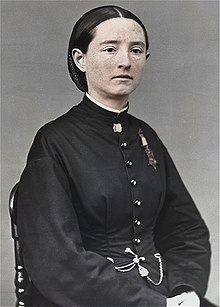What I wanted to do here is to highlight some very important and historical statistics of this CRS report I posted a couple of weeks back. This gives a very clear picture as to how significant private security contractors are to the war effort in Afghanistan, and the sacrifice of PSC’s. Especially the sacrifice of local national PSC’s, which account for most of the deaths of this group.
Although I must emphasize ‘recorded’ here, because no one recorded the amount of US PSC use during our very early wars. I personally think that privateer usage was one of the highest number of PSC’s used by the US during times of war. Although a strong argument could also be made that the expansion of the west in the US would be the most impressive number of PSC’s used during time of war.
Pioneers, investors, the military, the railroads, cattle companies, shipping companies, banks, law enforcement etc. were all highly dependent upon on private security in all of it’s forms to protect lives and investments against Indian combatants and criminals. During this time period, there were 8 contractors awarded the Medal of Honor as well.
And of course this expansion of the west and resulting Indian Wars and land wars covered a very long time period of conflict in the US. For that reason, I would estimate that this time period would be the highest use of PSC’s by the US. It just wasn’t recorded by any government accounting office. Although Buffalo Bill did a pretty good job of bringing some attention to the matter with his Wild West Show. (which ran from 1883- 1913, a 30 year long show!)-Matt
Number of Private Security Contractors in Afghanistan
Since December 2009, the number of PSC personnel in Afghanistan has exceeded the number of PSC personnel in Iraq. According to DOD, as of March 2011, there were 18,971 private security contractor personnel in Afghanistan. This represents the highest recorded number of private security contractor personnel used by DOD in any conflict in the history of the United States. Local nationals made up 95% of all security personnel.
According to DOD, for the 15-month period of September 2007 to December 2008, the number of security contractors in Afghanistan increased by 16%, from 3,152 to 3,689. However, from December 2008 to March 2011, the number of security contractors increased from 3,689 to 18,971, an increase of over 400%. DOD has attributed the increase in contractors to increased operational tempo and efforts to stabilize and develop new and existing forward operating bases.
Security Contractors Compared to Total Contractor and Troop Levels
From December 2008 to March 2011, the number of U.S. troops and DOD contractor personnel in Afghanistan increased. However, the number of security contractors increased at a much faster rate (414%) than total contractors (26%) or troop levels (207%). As of March 2011, security contractor personnel made up 21% of all DOD contractors and was equal to 19% of the size of total U.S. troop presence in Afghanistan.
Casualty Rates of PSC Personnel vs. Uniformed Personnel
According to DOD, from June 2009 to November 2010, 319 private security contractor personnel working for DOD have been killed in action in Afghanistan, compared to 626 U.S. troops killed in action over the same period.28 Adjusting for the difference in the number of PSC personnel compared to troops, a PSC employee working for DOD in Afghanistan is 2.75 times more likely to be killed in action than uniformed personnel. More contractor security personnel were killed in action providing mobile security (233 people or 73% of fatalities) than static security, even though those providing mobile security are only 25%- 30% of the total PSC workforce.
Nationality of Contractors
According to DOD, since September 2007, local nationals have made up 90% or more of all security contractors in Afghanistan.
Link to report here.

